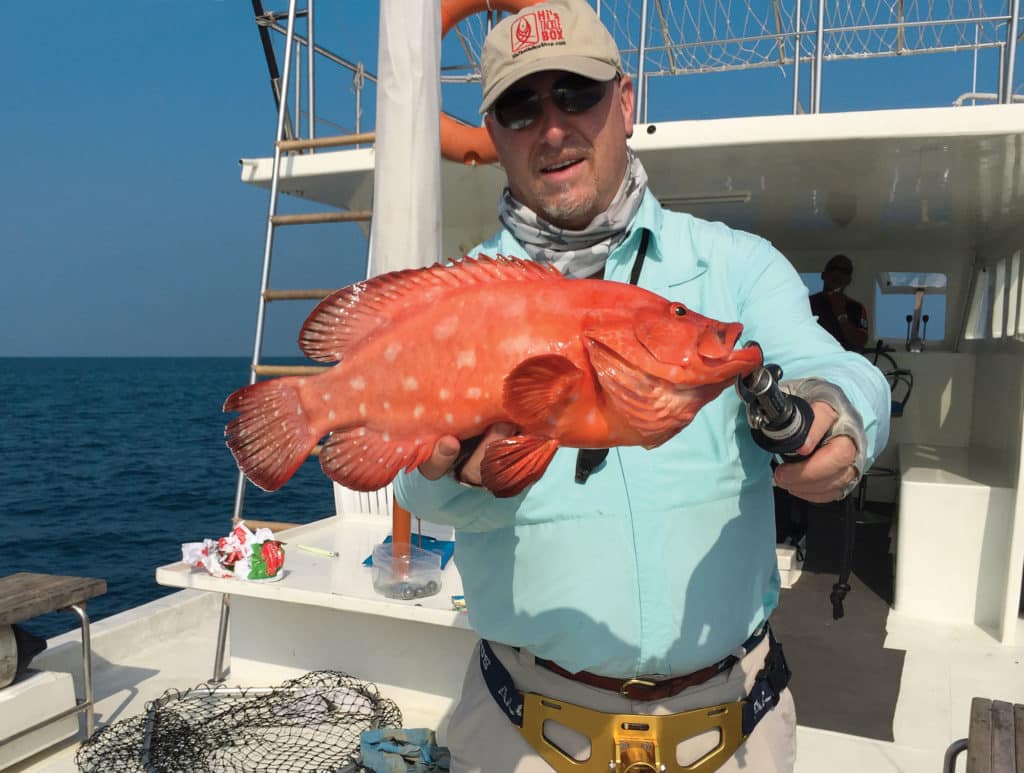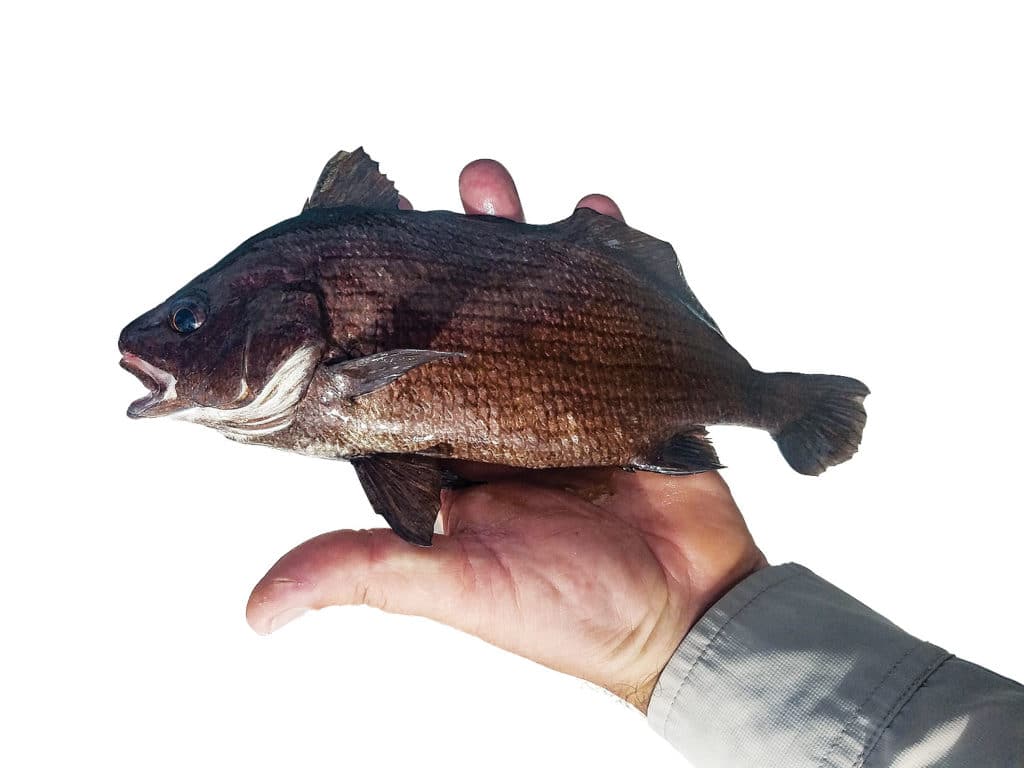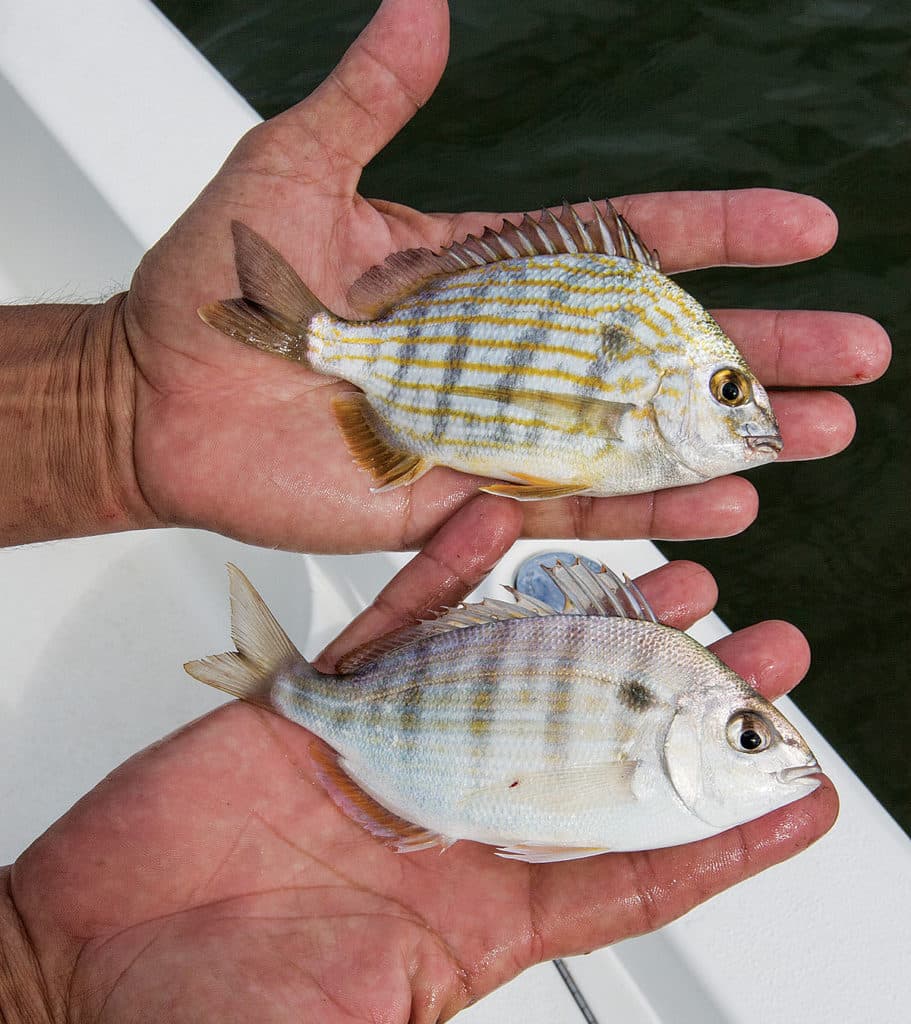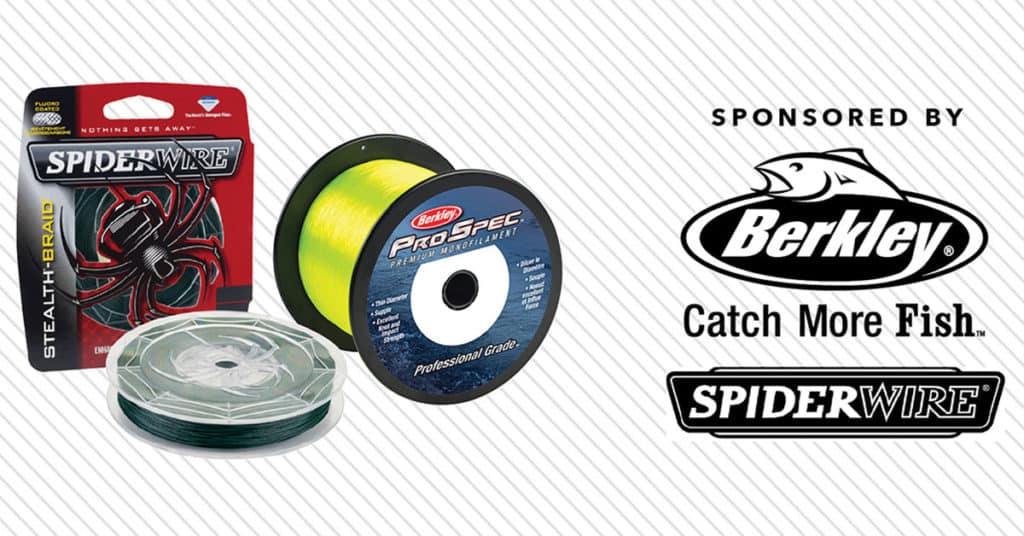In each issue of Sport Fishing magazine, a panel of five international expert ichthyologists identifies unusual and often amazing fishes in photos submitted by readers. Find out what they are and learn fascinating facts about them.
Tropical Tomato
QUESTION:
I caught this grouper on a shallow reef in the Maldives this past January. I believe it to be a tomato cod, Cephalopholis sonnerati, though it seems to be in neither the actual cod nor tomato families. Am I right on this ID, and if so, can you tell me more about this species?
Steve Wozniak
Alamo, California

ANSWER:
I concur with your diagnosis, Steve. It’s Cephalopholis sonnerati, otherwise known as a tomato hind or tomato cod, in fact a pretty coral grouper belonging to the family Serranidae (tropical groupers). This species occurs individually or in small groups on coral reefs throughout most of the Indo-Pacific region from Eastern Africa to the Line Islands and Kiribati in the Central Pacific, north to Japan and south to the Great Barrier Reef off eastern Australia. Being unrelated to tomatoes, its common name arises from the simple but elegant reddish blotched coloration of adult fish. Juveniles, on the other hand, are dark reddish-brown to black with a gray or white rear edge to the tail, more like an eggplant if we keep with the vegetable theme. This species matures at around 11 inches long as a female, after which some change into males at around 14 to 15 inches, in the typical serranid fashion of protogynus hermaphrodism.
C. sonnerati can be encountered at depths up to 300 feet, and occur mainly around large coral structures, often near cleaning-station areas frequented by cleaner wrasse and shrimp. Like other coral groupers, their diet consists mainly of crustaceans such as shrimps, crabs and stomatopods, as well as occasional smaller fishes. They reportedly grow to a maximum size of around 23 inches and 10 pounds. The all-tackle world record tomato hind, from Japan in 2002, weighed 5 pounds, 2 ounces. That begs the question: Was yours larger?
—Ben Diggles
Dark Drum
QUESTION:
This photo came to me from a fellow Fort Pierce (Florida) guide. We may have caught one also while fishing with Patrick Sebile. Can you help with the ID?
Capt. Tim Simos
Bluewater Inshore Guide Service
Fort Pierce, Florida

ANSWER:
Your friend caught a cubbyu, Pareques umbrosus, Tim. This member of the drum family (Sciaenidae) is reported to reach a maximum length of 10 inches, but its average size is much smaller. It ranges from North Carolina south at least as far as Venezuela, including Bermuda, the Gulf of Mexico, and the Greater and Lesser Antilles at depths to 300 feet. It is usually found in areas with sandy or muddy bottoms, and is often found in association with coral reefs. It may be taken as bycatch in trawls but is not targeted as a food fish. Juveniles are sometimes displayed in marine aquariums.
—Ray Waldner
Splendiferous Sea Bass
QUESTION:
I believe the fish at the top in this photo is a splittail bass. But what is the fish below it? In Costa Rica, they call these margaritas. We’ve been catching them in 200 to 400 feet of water. They’re tasty, but the meat is very soft.
Cory Craig
Costa Rica

ANSWER:
That bright orange-red fish (lower) with the striking yellow edge to its tail is Pronotogrammus multifasciatus, the threadfin bass. Threadfins are small sea basses of the family Serranidae; the world record is about 14 inches long. They’re found from Southern California south as far as Peru. The species only occasionally ventures into cooler, more temperate waters. Although they’ve been recorded from depths of 45 to 984 feet, I don’t think they like to be shallower than about 150 feet. These are plankton feeders, with small mouths, and unless you’re fishing with sabiki rigs or other small hooks, the chances of connecting with one are low. When we do our manned-submersible surveys on deepwater reefs and oil platforms off Southern California, we see these striking fish on occasion, always tucked away in crevices, and refer to them as “those bathtub-toy fish.”
—Milton Love
Glass Eye for The Straight Guy
QUESTION:
While on my honeymoon last year in Mauritius, I caught this silvery fish with the big eye and have been wondering what it is.
Dan Andre Aarsvold
Norway

ANSWER:
That interesting fish is a member of the family Priacanthidae (commonly known as glasseyes or bigeyes), a group of deepwater fishes that frequent tropical-reef systems throughout the Indo-Pacific region. This fish is characterized by its extremely large eyes, upturned mouth and a narrow, laterally compressed body. Nocturnal, they frequent dark caves or crevices during the day, moving out to feed once the sun sets. They feed mainly on zooplankton but also are known to eat small squids and octopuses. Most of the known species occur in shallow-reef habitats, but others range to depths as great as 1,500 feet. As for the specific identity of this one, it’s hard to tell because it’s a juvenile (most species grow to 14 to 18 inches long) and the fins are not visible against the background. But it’s most likely a glasseye (Heteropriacanthus cruenatus), which occurs in Mauritius, and grows to around 18 inches.
—Ben Diggles
A Bream, It Would Seem
QUESTION:
A couple of years ago, I started catching fish like that at the top. It looks remarkably similar to a pinfish, which I’m sure is the bottom fish. I assumed that’s what these were, until I looked closer. Can you help me identify it?
Tim Simos
Bluewater Inshore Guide Service
Fort Pierce, Florida

ANSWER:
Interesting question, Tim. The photo indeed shows two different species with a few obvious differences between them, besides their pigmentation:
• the position of the black shoulder spot relative to the fishes’ lateral lines;
• the pigmentation of the anal fins, the longer second anal spine on the lower fish;
• the upper fish’s greater relative body depth and steeper forehead profile;
• the curved maxillary (upper jaw) on the top fish.
There’s also a difference in the number of dorsal-fin spines in the two fishes, the upper having 13 and the lower having fewer, although I can’t get an exact count from the photo.
Based on the differences in these characteristics, I believe you’re dealing with two species, the upper a female sea bream (Archosargus rhomboidalis), and the lower individual being a pinfish (Lagodon rhomboides). Although these species are clearly very similar and many anglers confuse them, they’re placed taxonomically in different genera. Both have overlapping distributions in Florida; overall, the sea bream ranges from New Jersey through Argentina, including the Gulf of Mexico and Caribbean Sea, whereas the pinfish can be found from Massachusetts through the Yucatan Peninsula, including the Gulf of Mexico and Bermuda, but it’s absent from the West Indies, other than a portion of Cuba. Both species are absent from the Bahamas. The pinfish grows slightly larger than the sea bream, reaching a maximum length of around 16 inches. Both are good table fare, widely regarded as panfish due to their small size.
—Ray Waldner
Read Next: Strange Fishes From the Deep — Blood-Red Snapper and More
Sport Fishing‘s Prestigious International Panel of Experts
Northeast
Mike Fahay, Sandy Hook Marine Lab, New Jersey
Southeast
Ray Waldner, Ph.D., Palm Beach Atlantic University, Florida
Gulf of Mexico
Bob Shipp, Ph.D., University of South Alabama
West Coast
Milton Love, Ph.D., UCSB, California
Far Pacific
Ben Diggles, Ph.D., Queensland, Australia
Bluewater Pelagics
John Graves, Ph.D., Virginia Institute of Marine Science

CHALLENGE OUR EXPERTS (And Win Up to 10,800 Yards of Line!)
Send in your question and any relevant photos of your mysterious catch or observation for our experts’ ID and feedback. If we publish your question and you have a shipping address within the United States or Canada, you’ll win a 3‑pound spool of Berkley Pro Spec ocean-blue or fluorescent-yellow monofilament (1,000 to 10,800 yards, depending on line strength) or a 1,500‑yard spool of Spiderwire Stealth braid up to 100‑pound‑test! Send questions and images via email to fishfacts@sportfishing.com (include your hometown) or via post to Sport Fishing Fish Facts, 460 N. Orlando Ave., Suite 200, Winter Park, FL 32789.








